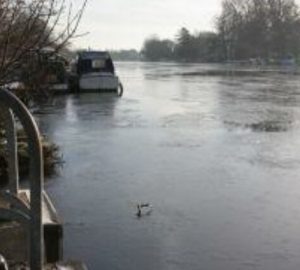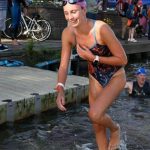Swimming, fast and slow
Swimming performance is a strange thing. If you’re relatively new to the sport you will almost certainly be able to increase your speed over all distances, from a 25m sprint to a 10km marathon, by improving your technique and swimming efficiency. However, once you reach a reasonable proficiency there’s definitely a trade-off between sprint speed and endurance, which is why you don’t see the same swimmers winning events at all distances. Even the amazing Katie Ledecky, who is so dominant in distance freestyle and holds world records at 400m, 800m and 1500m, is nearly two seconds slower than the world record holder over 100m.
If you want to swim fast over long distances (anything more than 400m and almost any open water event) then a good turn of pace on short swims can be useful but you don’t need to be the fastest. It’s more important that you can hold your pace.
Interestingly, you can afford to lose some sprint speed and still become a faster long distance swimmer. In fact, losing sprint speed may be a direct consequence of spending time improving your endurance.
Organised swim training sessions at both junior and masters swimming clubs often tend to be orientated towards sprinting. This is because most pool races are sprints or middle distance events (50, 100 and 200m). From a coaching and practical perspective, it’s also easier to manage swimmers of different abilities in the same lane if they are doing shortish repeats off longish intervals (e.g. repeats of 50 or 100m, with a good rest between each). These encourage you to swim fast and develop your anaerobic capacity. However, if you want to improve over longer distances, you can really benefit from swimming further, more slowly and taking shorter rests between your intervals.
Last winter I did a lot of sprint-based masters swim training sessions in preparation for the European Masters Swimming Championships in May. Then, from the end of May through to the end of September I changed the emphasis to aerobic training, with the aim of swimming well at the British Open Water Championships. The result was that I could sustain a pace several seconds faster per 100m at the British Championships in September compared to the ASA Nationals in July.
But what happened to my sprint speed?
Disappointingly, but not unexpectedly, I slowed down over shorter distances. I did a masters gala in April and again in October and the comparison was quite striking: 0.88s slower over 50m and 1.36s slower over 100m. On the other hand, I swam 1.32s faster over 400m, a distance where the aerobic training starts to kick in.
The point is that you get what you train for and the body is amazingly adaptable, but it can’t do everything. It’s easy to imagine that if you could improve by a second over a 50m sprint, then this would equate to 30 seconds over 1500m – but it simply doesn’t work like that. In fact, it’s quite normal to improve your long distance times while your sprint times stay the same or get worse.
Most open water races are endurance events. If you want to swim them faster, then don’t worry about your 50m or 100m times but work on your efficiency, aerobic capacity and pacing skills. You will see bigger and longer lasting improvements that way.








